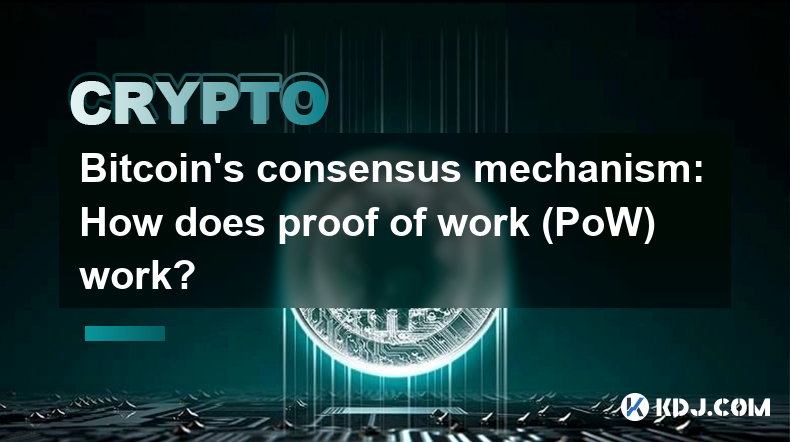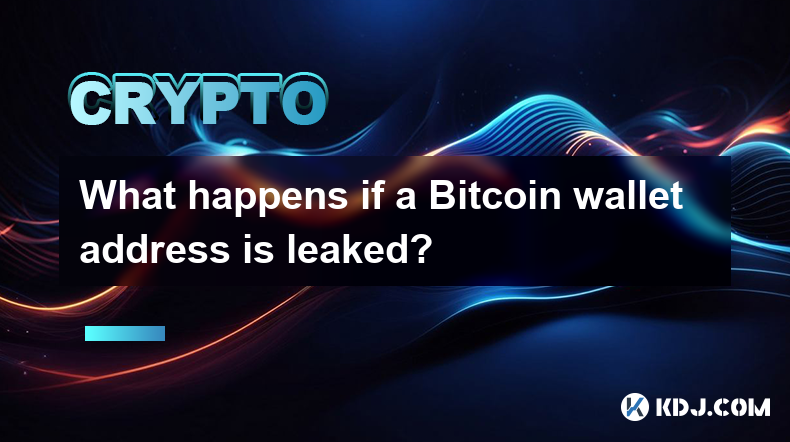-
 Bitcoin
Bitcoin $84,060.7791
-1.60% -
 Ethereum
Ethereum $1,584.0168
-2.82% -
 Tether USDt
Tether USDt $1.0000
0.00% -
 XRP
XRP $2.0861
-3.10% -
 BNB
BNB $578.8559
-1.57% -
 Solana
Solana $125.9396
-4.72% -
 USDC
USDC $1.0000
-0.01% -
 TRON
TRON $0.2539
2.65% -
 Dogecoin
Dogecoin $0.1532
-3.60% -
 Cardano
Cardano $0.6064
-4.76% -
 UNUS SED LEO
UNUS SED LEO $9.3924
-0.40% -
 Chainlink
Chainlink $12.1573
-3.47% -
 Avalanche
Avalanche $18.8825
-5.11% -
 Stellar
Stellar $0.2350
-2.46% -
 Toncoin
Toncoin $2.8620
-3.98% -
 Shiba Inu
Shiba Inu $0.0...01166
-2.35% -
 Sui
Sui $2.0863
-4.80% -
 Hedera
Hedera $0.1578
-4.35% -
 Bitcoin Cash
Bitcoin Cash $320.6979
-3.08% -
 Litecoin
Litecoin $75.0727
-2.75% -
 Polkadot
Polkadot $3.5242
-3.66% -
 Dai
Dai $1.0001
0.01% -
 Bitget Token
Bitget Token $4.3414
0.04% -
 Hyperliquid
Hyperliquid $15.2530
-4.56% -
 Ethena USDe
Ethena USDe $0.9992
0.01% -
 Pi
Pi $0.6141
-11.07% -
 Monero
Monero $219.9781
2.94% -
 Uniswap
Uniswap $5.1618
-3.81% -
 OKB
OKB $52.2768
-0.17% -
 Pepe
Pepe $0.0...07110
-2.72%
Bitcoin's consensus mechanism: How does proof of work (PoW) work?
Bitcoin's Proof of Work (PoW) secures the network by requiring miners to solve complex puzzles, ensuring transaction validation and new bitcoin minting.
Apr 10, 2025 at 04:14 pm

Bitcoin's consensus mechanism is a crucial aspect of its operation, enabling the decentralized network to agree on the state of the blockchain. At the heart of this mechanism lies the Proof of Work (PoW) protocol, which not only secures the network but also ensures that new bitcoins are minted fairly. In this article, we will delve into the intricacies of how PoW works within the Bitcoin ecosystem.
What is Proof of Work?
Proof of Work is a consensus algorithm used by Bitcoin to validate transactions and add them to the blockchain. The primary goal of PoW is to prevent double-spending and ensure the integrity of the blockchain. This is achieved by requiring participants, known as miners, to solve complex mathematical puzzles. These puzzles are intentionally designed to be difficult and time-consuming, ensuring that the process of adding new blocks to the blockchain is secure and decentralized.
The Role of Miners in Bitcoin's PoW
Miners play a pivotal role in the Bitcoin network by validating transactions and creating new blocks. To do this, they compete to solve the mathematical puzzle required by the PoW algorithm. The first miner to solve the puzzle gets to add a new block to the blockchain and is rewarded with newly minted bitcoins and transaction fees. This reward system incentivizes miners to participate and secure the network.
How Does the PoW Algorithm Work?
The PoW algorithm in Bitcoin involves a few key steps that miners must follow to validate transactions and add them to the blockchain:
Transaction Collection: Miners collect a set of unconfirmed transactions from the Bitcoin network. These transactions are then grouped into a block.
Block Creation: The miner creates a block header, which includes the hash of the previous block, the Merkle root of the transactions, a timestamp, and the nonce (a random number).
Hashing: The miner then hashes the block header using the SHA-256 algorithm. The goal is to find a hash that meets the network's difficulty target, which is a number that the hash must be less than or equal to.
Nonce Adjustment: If the hash does not meet the difficulty target, the miner adjusts the nonce and tries again. This process is repeated until a valid hash is found.
Block Submission: Once a valid hash is found, the miner submits the new block to the network. Other nodes on the network verify the block and, if valid, add it to their copy of the blockchain.
The Difficulty Adjustment in Bitcoin's PoW
To maintain a consistent block time of approximately 10 minutes, Bitcoin's PoW algorithm includes a difficulty adjustment mechanism. Every 2016 blocks, the network recalculates the difficulty target based on the time it took to mine the previous 2016 blocks. If blocks were mined faster than expected, the difficulty increases, making it harder to find a valid hash. Conversely, if blocks were mined slower than expected, the difficulty decreases, making it easier to find a valid hash. This ensures that the rate of block creation remains stable despite changes in the network's total computational power.
Security and Decentralization in PoW
The security of Bitcoin's PoW comes from the computational effort required to solve the mathematical puzzles. An attacker would need to control more than 50% of the network's total computational power to successfully launch a double-spending attack, a scenario known as a 51% attack. This high barrier to entry makes it extremely difficult and costly for malicious actors to compromise the network.
Additionally, PoW promotes decentralization by allowing anyone with the necessary hardware to participate in mining. While the rise of specialized mining hardware, such as ASICs, has led to the centralization of mining power in certain regions, the open nature of the protocol still allows for a diverse range of participants.
Energy Consumption and Environmental Impact
One of the most debated aspects of Bitcoin's PoW is its energy consumption. The process of solving the mathematical puzzles requires significant computational power, which in turn consumes a large amount of electricity. Critics argue that this high energy consumption is unsustainable and contributes to environmental degradation. Proponents, however, point out that the energy used in mining can come from renewable sources and that the security provided by PoW justifies the energy expenditure.
The Economic Incentives of PoW
The economic incentives built into Bitcoin's PoW system are crucial for its operation. Miners are rewarded with newly minted bitcoins and transaction fees for their efforts, which encourages them to continue validating transactions and securing the network. As the block reward halves approximately every four years, the reliance on transaction fees as a primary source of income for miners increases. This economic model ensures that miners have a vested interest in the long-term health and security of the Bitcoin network.
Frequently Asked Questions
Q: How does the hash function work in Bitcoin's PoW?
A: The hash function used in Bitcoin's PoW is SHA-256, which takes an input (the block header) and produces a fixed-size output. The goal is to find a hash that meets the network's difficulty target. This is done by adjusting the nonce in the block header and rehashing until a valid hash is found. The hash function is designed to be one-way, meaning it is easy to compute the hash but extremely difficult to reverse-engineer the input from the output.
Q: Can PoW be replaced with a more energy-efficient consensus mechanism?
A: While PoW is energy-intensive, it provides a high level of security and decentralization. Alternative consensus mechanisms, such as Proof of Stake (PoS), are more energy-efficient but may have different trade-offs in terms of security and decentralization. The Bitcoin community has not yet reached a consensus on replacing PoW with another mechanism, as the current system has proven effective in securing the network.
Q: What happens if two miners find a valid block at the same time?
A: In the event that two miners find a valid block simultaneously, a temporary fork in the blockchain can occur. The network will continue to work on both branches until one branch becomes longer than the other. Miners will then focus on the longer branch, and the shorter branch will be abandoned. This process ensures that the blockchain remains consistent and secure.
Q: How does the block reward halving affect the PoW system?
A: The block reward halving, which occurs approximately every four years, reduces the number of new bitcoins minted per block by half. This event impacts the PoW system by decreasing the immediate reward for miners, potentially affecting their profitability. However, as the block reward decreases, transaction fees become a more significant part of miners' income, incentivizing them to continue securing the network.
Disclaimer:info@kdj.com
The information provided is not trading advice. kdj.com does not assume any responsibility for any investments made based on the information provided in this article. Cryptocurrencies are highly volatile and it is highly recommended that you invest with caution after thorough research!
If you believe that the content used on this website infringes your copyright, please contact us immediately (info@kdj.com) and we will delete it promptly.
- 5 Altcoins That Will Explode This Week
- 2025-04-16 19:25:13
- Shiba Inu (SHIB) Remains the #2 Memecoin on CoinMarketCap, Trailing Only Dogecoin (DOGE)
- 2025-04-16 19:25:13
- 4 Cryptos Shaking Up the Markets and Giving Users Real Utility
- 2025-04-16 19:20:12
- Toobit Expands Its Services by Partnering with NovaMeme, a Cutting-Edge IDO-to-Market Decentralized Finance (DeFi) Fundraising Platform
- 2025-04-16 19:20:12
- Bitcoin (BTC), Pi Network's Pi Coin, and PepeX (PEPX) Are Experiencing a Rebound After US President Donald Trump's Tariff-Induced Market Plunge
- 2025-04-16 19:15:13
- 3 Under-the-Radar Cryptos That Could 10x or 100x
- 2025-04-16 19:15:13
Related knowledge

What happens if a Bitcoin wallet address is leaked?
Apr 16,2025 at 02:42pm
When a Bitcoin wallet address is leaked, the implications can be significant, depending on several factors. Understanding the potential risks and how to mitigate them is crucial for any Bitcoin user. This article delves into the various scenarios that can occur when a Bitcoin wallet address becomes public and offers guidance on how to protect your asset...

What are the latest ways to get Bitcoin for free?
Apr 16,2025 at 05:00pm
In the dynamic world of cryptocurrency, Bitcoin remains at the forefront, and many enthusiasts are constantly seeking ways to acquire it without spending money. While the allure of getting Bitcoin for free is strong, it's essential to approach these methods with caution and a clear understanding of the potential risks and rewards. This article will expl...

What is Bitcoin halving? Analysis of the impact on prices
Apr 09,2025 at 01:14pm
Bitcoin halving is a pivotal event in the cryptocurrency world that occurs approximately every four years, or every 210,000 blocks. The event is designed to reduce the rate at which new bitcoins are generated, thereby controlling inflation and increasing scarcity over time. During a halving, the reward that miners receive for successfully adding a block...

What to do if Bitcoin is stolen? Security protection and recovery possibilities
Apr 09,2025 at 03:42pm
If your Bitcoin is stolen, it can be a distressing experience, but there are steps you can take to protect your remaining assets and attempt to recover your lost funds. This article will guide you through the process of securing your Bitcoin and exploring recovery possibilities. Immediate Actions After Bitcoin TheftThe moment you realize your Bitcoin ha...

How to avoid Bitcoin investment scams? Common scams revealed
Apr 10,2025 at 05:14pm
Introduction to Bitcoin Investment ScamsBitcoin and other cryptocurrencies have become increasingly popular investment options, attracting both seasoned investors and newcomers alike. However, with the rise in popularity, there has also been a surge in Bitcoin investment scams. These scams can range from Ponzi schemes to fake exchanges and fraudulent in...

Guide to secure Bitcoin storage: cold wallets vs hot wallets
Apr 11,2025 at 08:42am
Guide to Secure Bitcoin Storage: Cold Wallets vs Hot Wallets When it comes to storing Bitcoin, security is paramount. The choice between cold wallets and hot wallets can significantly impact the safety of your digital assets. This guide delves into the differences between these two types of wallets, their respective advantages and disadvantages, and how...

What happens if a Bitcoin wallet address is leaked?
Apr 16,2025 at 02:42pm
When a Bitcoin wallet address is leaked, the implications can be significant, depending on several factors. Understanding the potential risks and how to mitigate them is crucial for any Bitcoin user. This article delves into the various scenarios that can occur when a Bitcoin wallet address becomes public and offers guidance on how to protect your asset...

What are the latest ways to get Bitcoin for free?
Apr 16,2025 at 05:00pm
In the dynamic world of cryptocurrency, Bitcoin remains at the forefront, and many enthusiasts are constantly seeking ways to acquire it without spending money. While the allure of getting Bitcoin for free is strong, it's essential to approach these methods with caution and a clear understanding of the potential risks and rewards. This article will expl...

What is Bitcoin halving? Analysis of the impact on prices
Apr 09,2025 at 01:14pm
Bitcoin halving is a pivotal event in the cryptocurrency world that occurs approximately every four years, or every 210,000 blocks. The event is designed to reduce the rate at which new bitcoins are generated, thereby controlling inflation and increasing scarcity over time. During a halving, the reward that miners receive for successfully adding a block...

What to do if Bitcoin is stolen? Security protection and recovery possibilities
Apr 09,2025 at 03:42pm
If your Bitcoin is stolen, it can be a distressing experience, but there are steps you can take to protect your remaining assets and attempt to recover your lost funds. This article will guide you through the process of securing your Bitcoin and exploring recovery possibilities. Immediate Actions After Bitcoin TheftThe moment you realize your Bitcoin ha...

How to avoid Bitcoin investment scams? Common scams revealed
Apr 10,2025 at 05:14pm
Introduction to Bitcoin Investment ScamsBitcoin and other cryptocurrencies have become increasingly popular investment options, attracting both seasoned investors and newcomers alike. However, with the rise in popularity, there has also been a surge in Bitcoin investment scams. These scams can range from Ponzi schemes to fake exchanges and fraudulent in...

Guide to secure Bitcoin storage: cold wallets vs hot wallets
Apr 11,2025 at 08:42am
Guide to Secure Bitcoin Storage: Cold Wallets vs Hot Wallets When it comes to storing Bitcoin, security is paramount. The choice between cold wallets and hot wallets can significantly impact the safety of your digital assets. This guide delves into the differences between these two types of wallets, their respective advantages and disadvantages, and how...
See all articles























































































